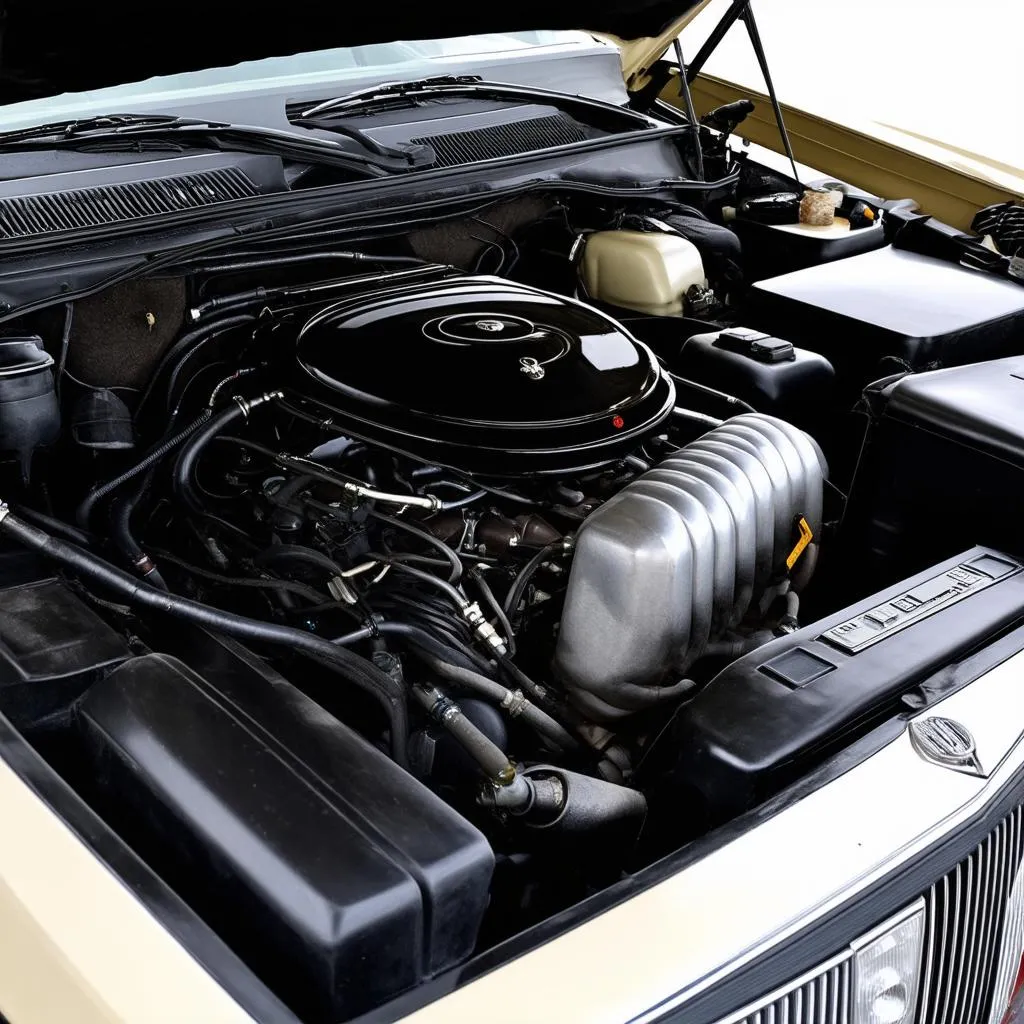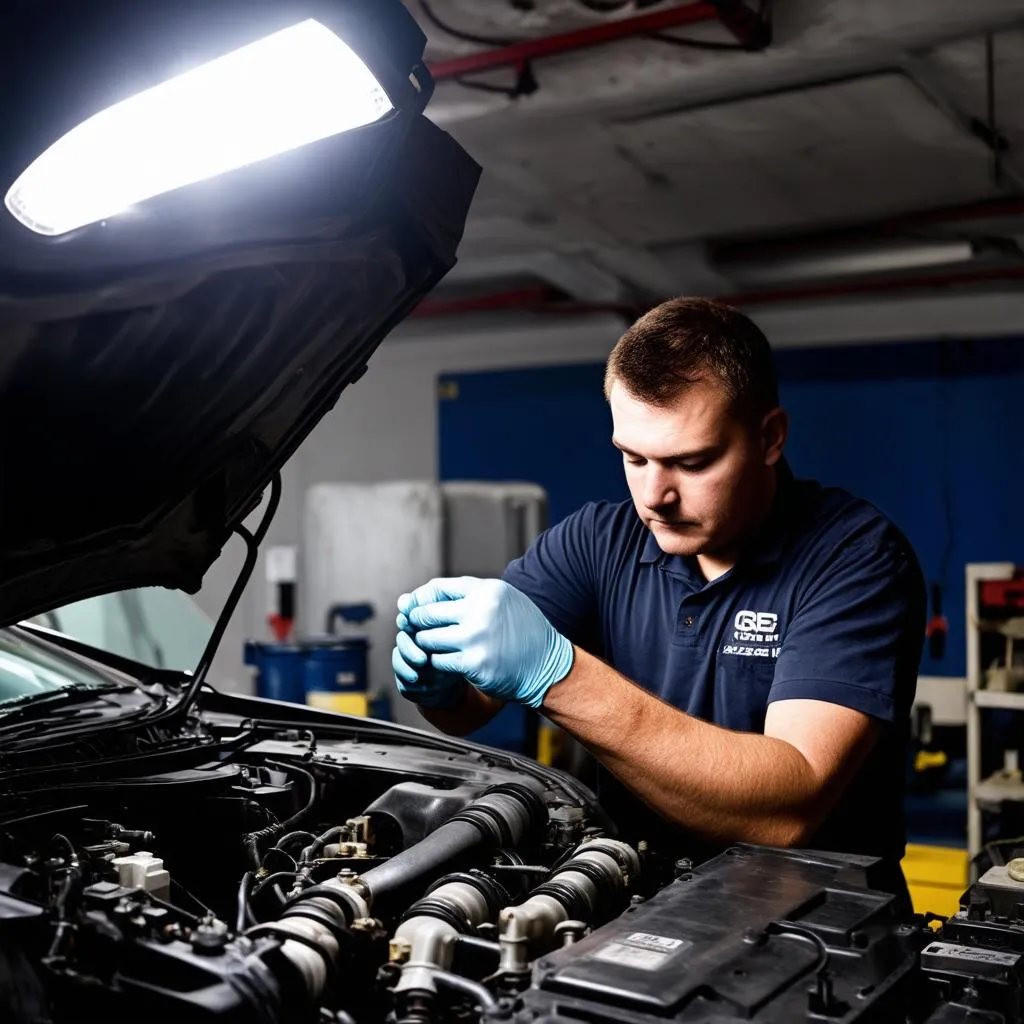Imagine this: you’re cruising down the highway in your classic 1987 Lincoln Mark VII, the wind in your hair (or at least, the feeling of it), when suddenly, your check engine light flashes on. A wave of unease washes over you. You pull over, pop the hood, and scratch your head. What now? This, my friend, is the reality of owning a vintage beauty. Luckily, your car speaks to you, though in a language slightly more cryptic than English. It’s speaking in OBD codes, and today, we’re deciphering code 34.
Understanding the Enigma: What is OBD Code 34?
Before we delve into the specifics of code 34 on your 1987 Lincoln Mark VII, let’s take a step back. What even is an OBD code? Think of it as your car’s way of saying, “Hey, something might be off here.” OBD stands for On-Board Diagnostics, and these codes are essentially trouble alerts from your car’s computer, the Electronic Control Unit (ECU).
Now, back to code 34. In the world of your Lincoln, this specifically points to an issue with the EGR system, more precisely the EGR Vacuum Regulator Solenoid. “EGR” stands for Exhaust Gas Recirculation, a system designed to reduce emissions.
But what does this mean for you?
- Performance hiccups: You might notice rough idling, a lack of power, or even stalling.
- Fuel inefficiency: A malfunctioning EGR system can wreak havoc on your gas mileage.
- Environmental impact: Your car’s emissions might be higher than usual, which isn’t great for Mother Earth.
 Lincoln Mark VII engine bay
Lincoln Mark VII engine bay
Decoding Code 34: Common Causes and Solutions
Let’s break down the usual suspects behind a code 34 on your Lincoln and how to address them:
1. Faulty EGR Vacuum Regulator Solenoid
This little guy controls the vacuum flow to the EGR valve, and if it goes bad, it can throw the whole system out of whack.
Solution: Testing the solenoid with a hand-held vacuum pump is a good starting point. If it’s not holding vacuum, replacement is usually the most effective solution.
2. Clogged EGR Valve or Passages
Over time, carbon deposits can build up in the EGR valve and its passages, hindering its function.
Solution: Removing and cleaning the EGR valve and passages is crucial. A good carburetor cleaner can work wonders here.
3. Vacuum Leaks
The EGR system relies on a complex network of vacuum hoses. Any leaks in this network can disrupt the delicate balance and trigger a code 34.
Solution: Carefully inspect all vacuum hoses for cracks, loose connections, or damage. Replace any suspect hoses and ensure all connections are secure.
4. Wiring Issues
Like any electrical system, the EGR system relies on proper wiring. Frayed, broken, or corroded wires can cause communication breakdowns between components.
Solution: Trace the wiring harness for the EGR system, checking for any visible damage. Repair or replace any faulty wiring as needed.
 Mechanic inspecting EGR valve
Mechanic inspecting EGR valve
Beyond the Technical: The Mind of a Machine and a Touch of Feng Shui
Some might scoff, but there’s an almost spiritual connection between a driver and their car. The 1987 Lincoln Mark VII, with its classic lines and powerful engine, embodies a certain energy. When your car throws a code 34, it’s almost as if it’s asking for a little TLC.
Even the principles of Feng Shui have a place here. A cluttered engine bay can disrupt the flow of energy, just as a cluttered home can disrupt our own energy. Taking the time to clean and organize your engine bay can not only improve your car’s performance but also create a sense of harmony between you and your machine.
FAQs: Your Burning Questions Answered
Q: Can I drive my Lincoln with a code 34?
While you technically can drive for a short period, it’s not advisable. Ignoring the issue can lead to more severe problems down the line.
Q: Is fixing a code 34 expensive?
The cost can vary depending on the root cause and whether you DIY or take it to a mechanic. However, addressing the issue early can save you from more costly repairs later.
Q: Could a bad oxygen sensor cause a code 34?
While possible, it’s less likely. A bad oxygen sensor usually triggers a different OBD code.
Q: What tools do I need to diagnose and fix a code 34?
A hand-held vacuum pump, a carburetor cleaner, and basic hand tools are a good start.
Need More Help? We’re Just a Message Away!
Still feeling a little lost? Don’t worry, we’ve got you covered! Our team of auto experts is available 24/7 to answer your questions and provide personalized guidance. Simply send a message to our Whatsapp at +84767531508, and we’ll be happy to help you get back on the road in your beloved Lincoln.
Keep Exploring the World of Auto Repair
Want to learn more about your 1987 Lincoln Mark VII or other OBD codes? Check out these other helpful articles on techcarusa.com:
- [Understanding Your Lincoln’s On-Board Diagnostics System]
- [Common OBD Codes and Their Meanings]
- [DIY Car Repair: Tips and Tricks for Beginners]
Remember, knowledge is power when it comes to car maintenance. Happy driving!